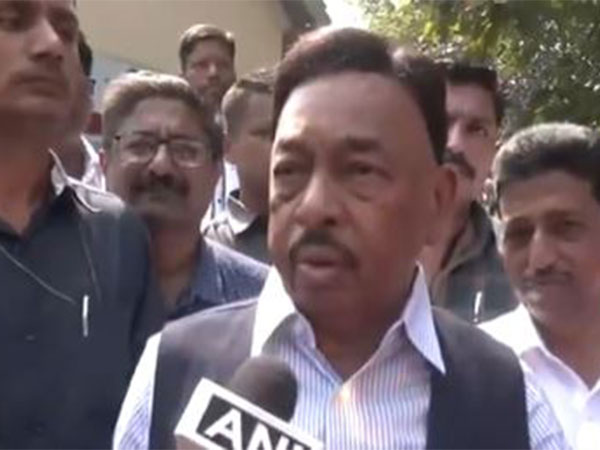New Delhi [India], August 25 (ANI): Shiva Gopal Mishra, General Secretary of the All India Railwaymen’s Federation, thanked Prime Minister Narendra Modi for the Unified Pension Scheme (UPS), which was approved by the Union Cabinet on Saturday.
Mishra said that the committee under the former finance secretary, TV Somanathan, which recommended UPS, had accepted almost all the demands of the representatives of the Central government employees.
“Almost all our demands have been accepted. 23 lakh beneficiaries of the UPS, take this step positively. Prime Minister Narendra Modi himself took cognisance of this and he held talks with us about this, for which I thank him,” Mishra told ANI on Sunday.
The UPS has provisions for a fixed pension amount, a guaranteed and predetermined sum of money that a retiree will receive regularly after retirement.
The UPS ensures that all central government employees who have served for 25 years or more will receive 50 per cent of their last drawn salary from the past 12 months as pension. Additionally, those employees will also be eligible for post-retirement inflation-linked increments in their pension amount.
In April 2023, a committee led by then finance secretary T V Somanathan recommended for the Unified Pension Scheme, which was approved by Modi cabinet on Saturday.
Under the UPS, there will be a provision of a fixed and assured pension, unlike the National Pension System (NPS), which does not promise a fixed pension amount.
For those employees who have completed 25 years or more of service, UPS provides for them a pension amount of 50 per cent of their basic pay earned during the last 12 months preceding retirement. Employees with a minimum of 10 years of service will be eligible for pension but it will be adjusted proportionally with number of years of service, with a minimum amount of Rs 10,000 a month.
The retirement benefits also include assured family pension, which equals to 60 per cent of the employee’s basic pay. This pension will be given in the event of an employee dying pre-maturely.
Inflation-linked indexation benefits will also be applied to assured pension, assured family pension, and assured minimum pension.
UPS also provides for gratuity or a lump-sum amount on superannuation. The gratuity amount will be calculated as per the old formulae, as one tenth of the monthly emolument, pay plus dearness allowance as on retirement date and calculated on the basis of every six months of service
The UPS also guarantees 6 per cent of the pension to be immediately transferred to the employee’s family as family pension, similar to the benefits offered by Old Pension Scheme (OPS).
Government says UPS has five pillars, which includes assured pension, assured family pension, assured minimum pension, inflation linked indexation, and gratuity on retirement
The NPS, which was introduced in January 2004, was initially established as a retirement plan exclusively for government employees, but in 2009, it was expanded to cover all sectors. The NPS is governed jointly by the government and the Pension Fund Regulatory Authority (PFRDA).
NPS provides for pension along with investment growth. On retiring, employees will have the option to withdraw a portion of their accumulated savings, while the remaining sum goes towards their monthly pension.
NPS allows employees to withdraw a maximum of 60 per cent of the total corpus upon reaching retirement age, and no taxes will be charged on the amount. The remaining 40 per cent is used to buy an annuity product, and returns on it will be given as pension every month to the subscribers.
But under the OPS pension given to central and state government employees, it was fixed at 50 per cent of their last drawn basic pay, similar to the structure in the UPS. Also, a dearness allowance (DA) was included to compensate for the rise in the cost of living, which is also done in UPS.
Moreover, in OPS, employees were entitled to a gratuity payment of a maximum of Rs 20 lakh on retirement.
In cases where a retired employee passes away, their family receives continued pension benefits. Also, no deductions are made from an employee’s salary towards pension contributions under OPS, unlike NPS.
The government says the new unified pension scheme (UPS) offers a combination of the benefits of both OPS and NPS. From the OPS, the UPS incorporates features such as an assured pension, inflation-linked indexation, a family pension, and a minimum pension.
From the NPS, UPS adopts a feature that allows employees to contribute towards their pension fund if they want a more personalised and higher pension upon retirement.
The government under UPS has also increased its contribution from 14 per cent currently in NPS to 18.5 per cent under UPS, employee contribution will remain the same. (ANI)
Disclaimer: This story is auto-generated from a syndicated feed of ANI; only the image & headline may have been reworked by News Services Division of World News Network Inc Ltd and Palghar News and Pune News and World News
HINDI, MARATHI, GUJARATI, TAMIL, TELUGU, BENGALI, KANNADA, ORIYA, PUNJABI, URDU, MALAYALAM
For more details and packages

















